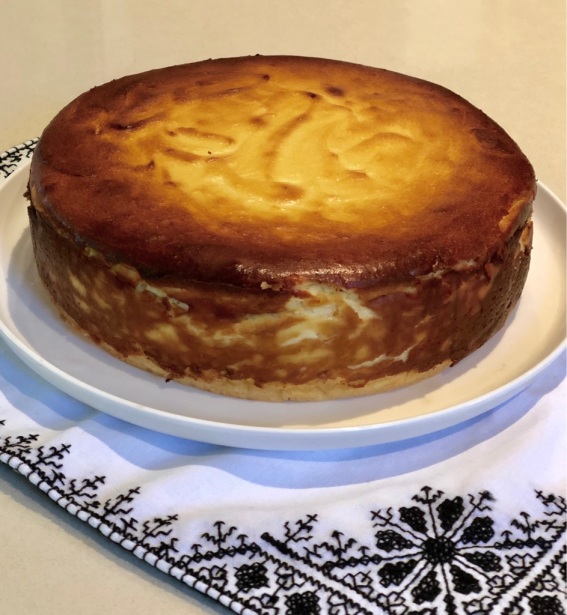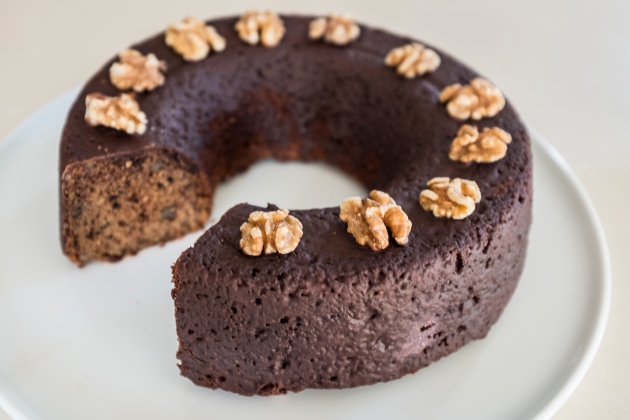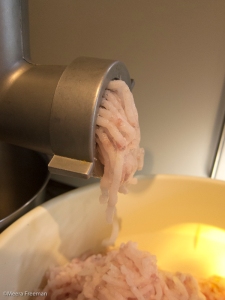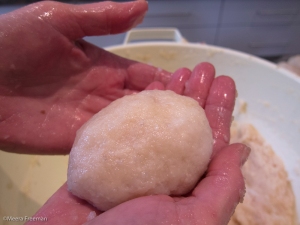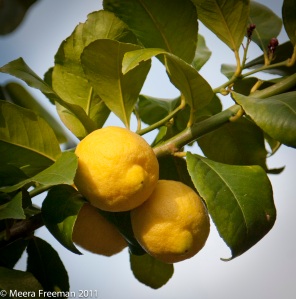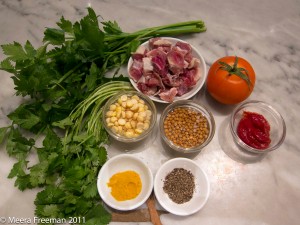A few weeks ago, Anna Diep invited me to lead an amazing culinary tour of Vietnam for her company Red Packet Tours. How exciting, I thought! What a trip to look forward to!
My history with Vietnamese food goes back some 25 years, from the first time I tasted Pho in 1987, to writing “The Vietnamese Cookbook” published by Viking Books in 1995, accompanying thousands of people through the Vietnamese precinct of Victoria Street in Melbourne and holding Vietnamese cooking classes in my studio until just recently.
Vietnam is a stunningly beautiful country with a wonderful, refined and tasty cuisine including “salads” featuring chicken, seafood, prawn and pork.
Over the years, and during my trips to Vietnam I have eaten many versions of this chicken salad made with different vegetables such as cabbage, cucumber, lotus stem or simply with onion and baby Vietnamese mint. The recipe below is my favourite, quick and easy to make, fresh and delicious!
If you would like to come with me to Vietnam and try other versions among countless other delicacies, contact Anna and book in for the May 2013 Tour.
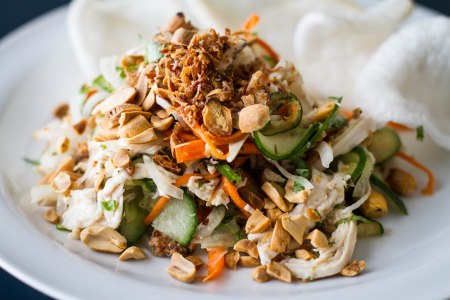
GOI GA
2 chicken breasts (or an equal quantity of boiled chicken eg from soup)
1/2 cup rice vinegar
1/2 teaspoon salt
1/2 teaspoon pepper
3 tablespoons sugar
1 white onion, cut into halves and thinly sliced
1 large cucumber, cut in half and thinly sliced
1 large carrot (shredded)
2 tablespoons shredded Vietnamese mint
1 tbsp shredded shiso
1/2 red chilli, seeded and finely chopped
1/2 cup chopped fried peanuts
1 tablespoon crisp fried shallots
Bring the chicken breasts to a boil in some salted water and cook until just cooked through. Drain and set aside until cool enough to handle. (If using boiled chicken from soup, simply shred.)
While the chicken is cooling, mix the vinegar with the salt, pepper and sugar and marinate the sliced onion in this mixture for at least 30 minutes.
Pull the cooled chicken into shreds with your fingers and mix with the cucumber and carrot. Add the marinated onion slices together with their juice.
Add the shredded herbs, chilli and peanuts tossing to combine. Season with some nuoc mam to taste and put onto a serving plate Garnish with the crisp fried shallots.
Serve with some prawn crackers.
NUOC MAM
1/2 fresh red chilli
1/4 clove garlic
4 tablespoons sugar
2 tablespoons rice vinegar
8 tablespoons water
2 tablespoons fish sauce
Chop the chilli and the garlic together finely. Dissolve the sugar in the water in a saucepan over a low flame and then stir in the vinegar and the fish sauce. Bring to the boil and then turn off and allow to cool
Transfer to a serving bowl and add some of the chopped chilli and garlic to taste.
